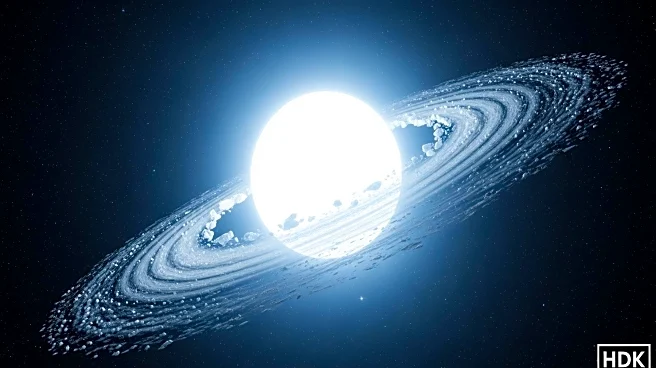What is the story about?
What's Happening?
Astronomers from the University of Warwick have identified a white dwarf star, WD 1647+375, consuming a frozen, water-rich planetary fragment. Using ultraviolet spectroscopy from the Hubble Space Telescope, researchers detected volatiles such as carbon, nitrogen, sulfur, and oxygen on the star's surface, indicating the presence of an icy object. This discovery provides evidence of icy, volatile-rich bodies in planetary systems beyond our Solar System.
Why It's Important?
The finding is significant as it suggests that icy objects, which are essential for delivering water and the ingredients for life, exist outside our Solar System. This discovery could have implications for understanding the formation of life on other planets and the composition of planetary systems. The research highlights the role of ultraviolet spectroscopy in detecting volatile elements, which are crucial for identifying potential life-building blocks around distant stars.
Beyond the Headlines
The study raises questions about whether the icy object originated within the planetary system of the white dwarf or was captured from interstellar space. The volatile-rich nature of the object resembles Kuiper-belt objects in our Solar System, suggesting it may be a fragment of a dwarf planet like Pluto. This research could lead to further exploration of icy bodies and their role in planetary system development.
AI Generated Content
Do you find this article useful?















